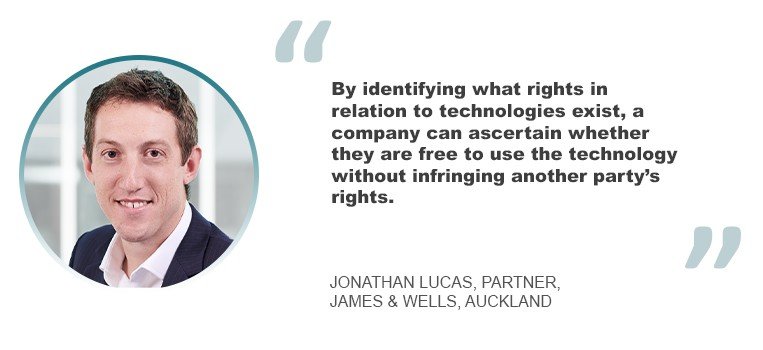Your game plan: Is patent monitoring in it?
24 July 2024

Patent monitoring provides the competitive intelligence necessary for the business to gain market advantage and business growth. Espie Angelica A. de Leon details several benefits when patent monitoring is part of a business’s game plan, along with strategies for effective implementation and insights from experts.
Is patent monitoring a part of your game plan? Are you even aware of its usefulness?
Patent monitoring or patent watching should be part of every organization and individual patent owner’s game plan and intellectual property strategy. But responsibility does not stop after securing that sought-after patent for an invention. Beyond the patent grant, patent owners should regularly monitor their competitors’ activities within the specific industry and technical field related to their invention.
Deanna Wong, founder of DeLab Consulting in Hong Kong, defined patent monitoring as “the systematic process of tracking, analyzing and reviewing competitors’ patent-related activities. This includes keeping track of new patent applications, granted patents, renewals and expanding product or service lines. It goes beyond gathering basic information, but more with added analysis to gain insights into things.”
But gain insights into what things in particular? There are several, such as technological and other advancements, industry cross-pollution, competitors’ geographical and business strategies, overall market trends and potential traditional legal consequences, including infringement or claims.
During patent monitoring, patent owners may identify a pending patent application relevant to their activities. By regularly checking its status, they can determine the rights it provides.

“By identifying what rights in relation to technologies exist, a company can ascertain whether they are free to use the technology without infringing another party’s rights, the so-called ‘freedom to operate,’” said Jonathan Lucas, partner at James & Wells in Auckland.

“A more advanced form of patent monitoring is the practice of regularly reviewing patent, and sometimes non-patent, literature to determine the patent landscape for a particular area of technology, typically to understand what competitors are working on with a view to predicting market trends,” added Chris Hemingway, director at Marks & Clerk in Kuala Lumpur.
Patent monitoring can also be done manually using software or by hiring a service provider.
According to Lucas, patent monitoring is most common among larger companies with sophisticated IP strategies in Australia and New Zealand. Overall, however, it is probably not as common as it might be to keep companies informed of risks emanating from their planned or actual commercial activities.
In Singapore, patent monitoring is neither rare nor common. This could be because the country does not have opposition proceedings and the like. “Patent monitoring or patent watch services could be useful if there is an avenue to prevent the patent from proceeding to allowance, such as in the case of opposition proceedings before the European Patent Office (EPO). Singapore does not have such proceedings,” revealed Daniel Poh, partner at Marks & Clerk in Singapore. “Singapore introduced the ability to file third-party observations only in 2021, and thus it is still rather early days, and it may take some time before businesses and companies recognize how patent monitoring service could be a useful strategy to consider.”
Cost may be another factor. Patent monitoring services in Singapore are relatively inexpensive. However, if it involves a pool of patent matters, the cost for the services could increase significantly, especially if it requires an analysis of filing or grant patterns or trends for a particular technical field.
Meanwhile, in the Philippines, patent monitoring is not a common activity. “In terms of filings of utility models and industrial designs,

domestic entities show a higher number of filings and grants as compared to foreign filers, and these are coming from state universities and research institutions funded by the government. This could indicate that patent monitoring is not a common practice in the Philippines, and the most likely reason is budget constraints,” shared Editha R. Hechanova, president of Hechanova and Co. and managing partner of Hechanova, Bugay, Vilchez & Andaya-Racadio in Manila.
According to her, studies have shown that research and development (R&D) is not given priority in the Philippines where R&D investment accounts for a measly 0.32 percent of gross expenditure. The figure is significantly lower than the global average. Japan, for instance, allocates 3.22 percent of its expenditure to R&D. The Philippines’ 0.32 percent does not even meet UNESCO’s recommended 1 percent minimum.
Benefits of patent monitoring
Patent owners who do not conduct monitoring activities may be missing out on its benefits. Wong emphasized the immense potential for added value when such activities are conducted correctly.
As mentioned, patent monitoring assists patent owners in finding out if anyone is infringing on their patent or if their technology development activity is infringing on any existing patent.
“One of the benefits is having a ‘first mover’ advantage,” said Poh. “For example, if Company A is very concerned about a competitor’s patent application, Company A could then monitor the progress since the file prosecution histories of major jurisdictions are accessible by third parties, and depending on the country, could intervene at an appropriate time. As a further example, the EPO has opposition proceedings, and Company A could thus oppose the grant if need be, and only if Company A has been monitoring the progress of that EP application.”
In the case of Singapore, where there are no opposition proceedings, third parties may file third-party observations that the Singapore Examiner may consider when deciding whether to allow a particular patent application.
Patent monitoring also allows the patent owner to determine early on whether they will face additional risks and challenges if they resort to certain actions, such as commercializing their technology. During patent monitoring, for example, a company may be able to spot certain innovations – whether still in the development stage or already introduced – that could negatively affect the commercialization of its patent. This allows the company to think of possible solutions and make informed decisions at the right time to maintain or improve its market position.
Another benefit is it enables the company to gain insights about trends in technology and market development. Such insights could serve as useful information that will allow the business to stay ahead of the curve.
It helps the company to foresee business and strategic movements as well.

“It could lead to potential M&A and carve out opportunities, among others,” said Wong.
Overall, patent monitoring or patent watch provides the competitive intelligence necessary for the business to gain market advantage and business growth.
How to conduct patent monitoring
To conduct patent monitoring or patent watch, the company must first undertake an initial investigation to identify what patent rights are granted or pending that could be relevant to the technology in question.
After identifying these patent rights, the company can proceed with the patent watch, which includes tracking the presence of any newly published relevant patents. Doing so every three months is usually appropriate. “By conducting this assessment regularly, the monitor is kept informed and the difficulty and cost of the monitoring is reduced since brief ‘top-up’ searches can be conducted each time. A watch every three months or so is usually appropriate, although the exact time frame may depend on the status of the patent being watched and the jurisdiction,” said Lucas.
Checking the register for the published application’s file history is the traditional approach to patent monitoring. However, according to Poh, major patent jurisdictions, including Singapore, provide automatic notifications to third parties for status updates of published patent applications. “A third party could subscribe to such a service to avoid having to check the register periodically. Indeed, such a subscription service is particularly useful and indeed more efficient and effective if the patent monitoring or patent watch covers a pool of patent applications,” said Poh.
According to Hechanova, the ways and best practices of conducting a patent watch depend on the size and/or resources of the business enterprise or the individual patent owner.
She suggested that startups or small- and medium-sized enterprises (SMEs) do their own scanning and search with available patent databases, technical journals and AI systems. She noted browsing the internet, looking at competitor websites and using their marketing staff to gather information and similar activities as part of this process, emphasizing that these activities would not be financially challenging.
For larger companies or research institutions, Hechanova recommended engaging a third-party service provider or collaborating with entities to develop their customized patent monitoring system. This will result in faster delivery of more comprehensive information. However, she warned that “there should be some cost-benefit analysis since missing out on a developing technology that could impact one’s invention or technology could have disastrous effects.”
Wong added that patent monitoring can also be done by mapping business strategy moves with patent filings to see diverging trends or converging strategies. “You can also cater to a client’s specific strategy and map out the opportunity of a strategy and market segment, target, potential, etc. We usually suggest this be done regularly, at least once a year, with multiple cross-function meetings to align thoughts and strategy on the client’s own IP and business strategy,” she said. “Regardless of the size of the company, this type of monitoring is useful. Whilst resources may differ, the potential value is just as much for small companies.”
According to Wong, some companies have integrated their patent monitoring strategy into their IP-driven roadmaps while others use it more or less from a defensive or competitive analysis standpoint and similar approaches. Nevertheless, patent monitoring or patent watch is a powerful tool and patent right owners – whether individuals, business enterprises or research bodies – ought to include it in their IP strategies and overall game plan.






